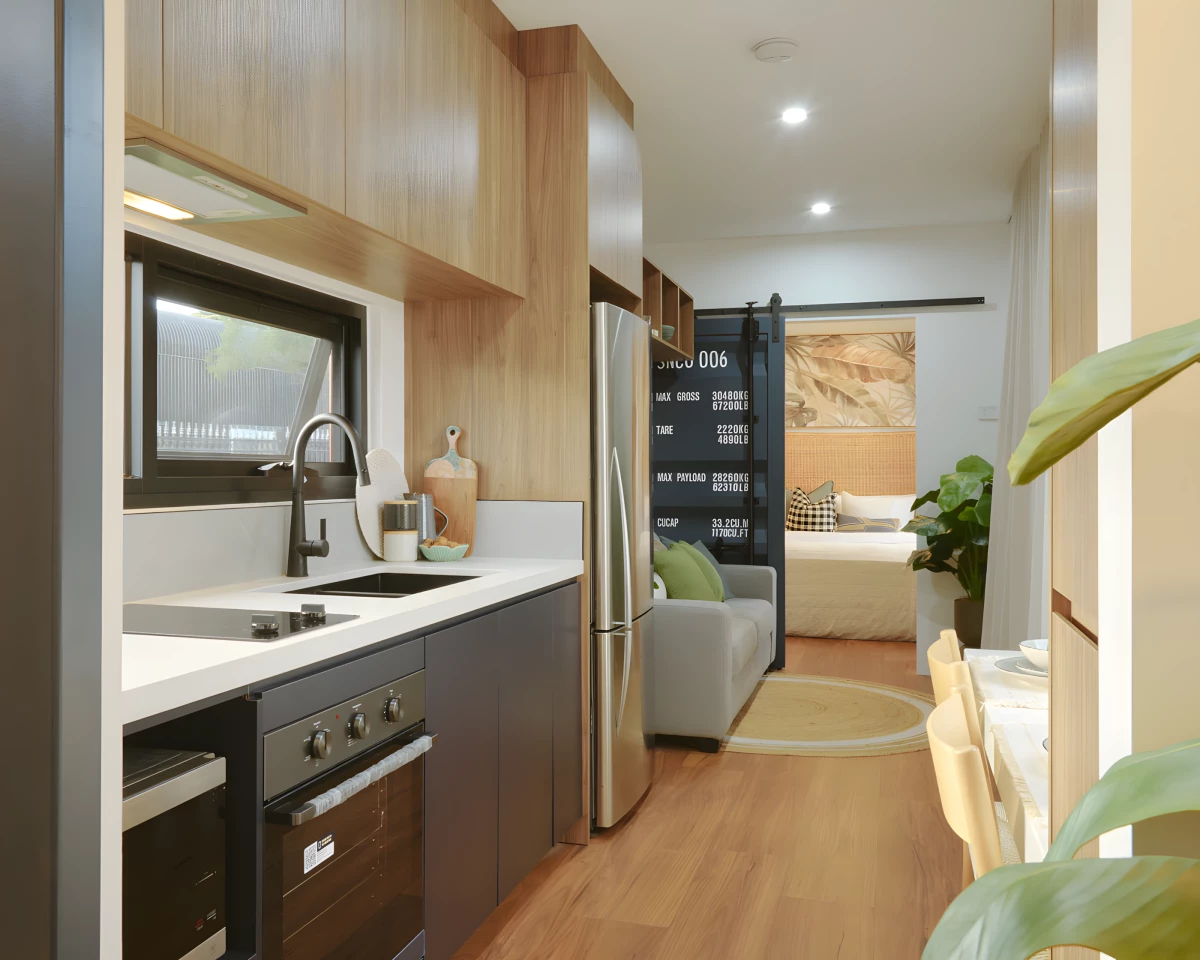Sonic Steel, the creator of the Mark T, recently completed another notable example of shipping container-based architecture. Named the Mark VI - VIC, the tiny house features a well-designed interior that's suitable for full-time living for up to two people.
The Mark VI - VIC is built from a single shipping container and has a length of 12.2 m (40 ft), and a width of 2.4 m (8 ft), which is around the same as North American tiny houses like the Purple Heart Manor. Its exterior is painted a uniform gray and it's fitted with generous glazing. It also has lots of insulation installed to mitigate the poor thermal performance inherent in shipping container-based architecture.
The home's center is taken up by a living room and kitchen. The living room contains a sofa and some storage space, plus space for a TV and coffee table, while the kitchen has a fridge/freezer, an oven, an induction cooktop, microwave, and quite a lot of cabinetry. There's also a dining table for two people nearby.

In a nice touch, the sliding container door that provides access to the bedroom appears unfinished, underlining its utilitarian nature. The bedroom itself has a double bed and, thanks to its first-floor position, has ample headroom to stand upright. It also includes a neat porthole-style circular window.
The bathroom in the Mark VI - VIC is relatively spacious for a container-based tiny house and contains a flushing toilet, a shower, plus a washer/dryer.
The Mark VI - VIC runs from an RV-style hookup, but can be configured to run fully off-the-grid with a 4.15-kW solar panel array, 10-kWh battery storage, and an inverter.
As its name suggests, the Mark VI - VIC is based on Sonic Steel's standard Mark VI model, which costs AUD 130,000 (roughly US$85,000), depending on options like furniture and off-grid additions. It's available throughout Australia.
Source: Sonic Steel












